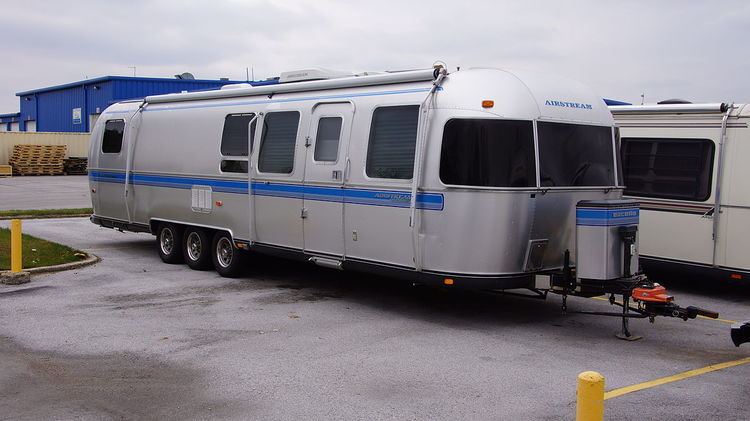 | ||
A landyacht is a term used to describe luxurious recreational vehicles and is an informal term for large automobiles. Other descriptors of these cars include 'slab', 'luxobarge', 'lead sled', or 'yank tank'. These terms refer to the largest full-sized cars made by U.S. and German auto manufacturers from the 1950s through the 1990s.
Contents
Origins
Land yachts are essentially large cars and recreational vehicles (RVs) compared to yachts that ride on land, evoking the relative size, maneuverability, and luxury of the water vessel. An extravagant RV with two floors designed for entertainment and super yacht lifestyle was valued at $3 million. The Airstream luxury recreational vehicle manufactureer uses "Land Yacht" as a model name.
In automobiles, the term is most commonly applied to the large American cars of the pre-oil crisis era. Cars of this era remain known for size, large and powerful V8 engines, and an emphasis on ride comfort at the expense of handling. Features commonly found in landyachts include very generous exterior proportions, somewhat vague steering, and a soft ride. Consumers purchased these large cars for a many reasons and practicality was usually one of them. One of the largest production sedans were the 1974–1976 Cadillac Fleetwood 75 sedans that reached 252.2 in (6,406 mm) in length and weighed 5,500–6,100 lb (2,500–2,800 kg). Many landyacht-type cars are four-door sedans or hardtop (no "B" pillar) body styles, but large coupes, convertibles, and station wagons were available.
Designs
Design, as much as size, distinguished the landyacht automobiles. While European and later Japanese car manufacturers often produced cars just as large and expensive, American marques distinguished themselves with eye-catching and innovative design and marketing. Cars from Cadillac, Lincoln, Imperial, Buick, and many other American brands featured elaborate, styling. In addition to simply being a large car, landyachts often included the following:
Modern use
After the oil crises of the 1970s and 1980s, U.S. consumers become more interested in fuel economy than glamor. Downsizing by the domestic automakers meant more efficient mid-size cars like the Ford Taurus. GM's discontinuation of both of their B platform, which included the Buick Roadmaster and Chevrolet Caprice and its D platform (Cadillac Fleetwood) in 1996 marked the demise of that company's "true" land yachts. Ford's full-size V8/rear-drive Panther platform, which underpinned the Ford Crown Victoria, Lincoln Town Car and Mercury Grand Marquis continued through the 2011 model year (although the Crown Victoria was sold as a fleet model only from 2008-2012).
